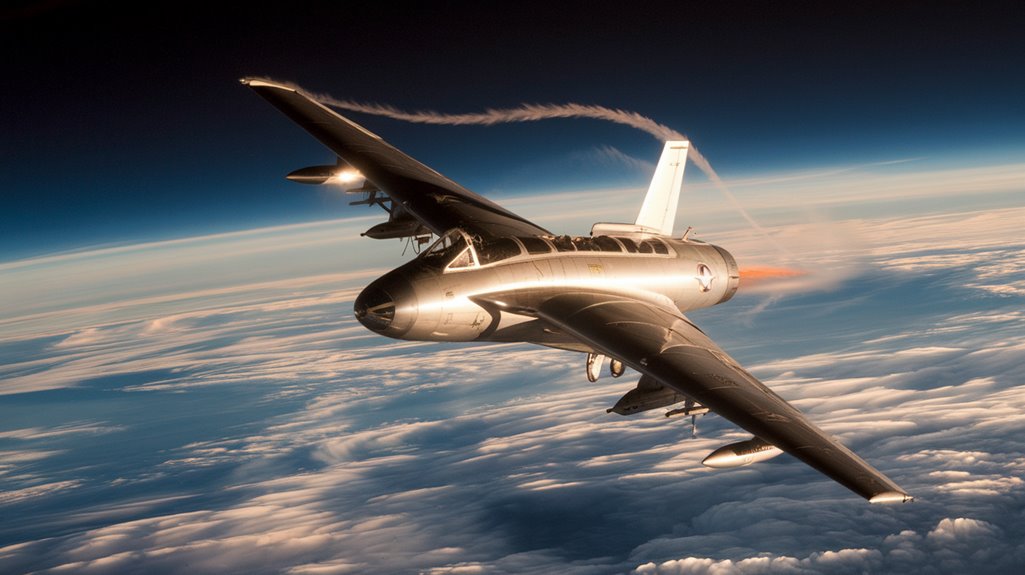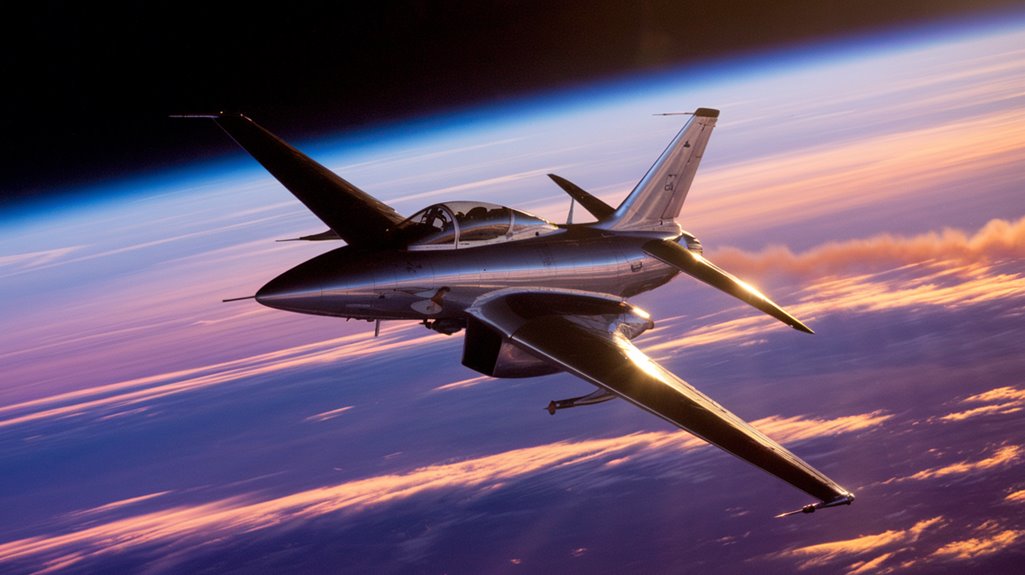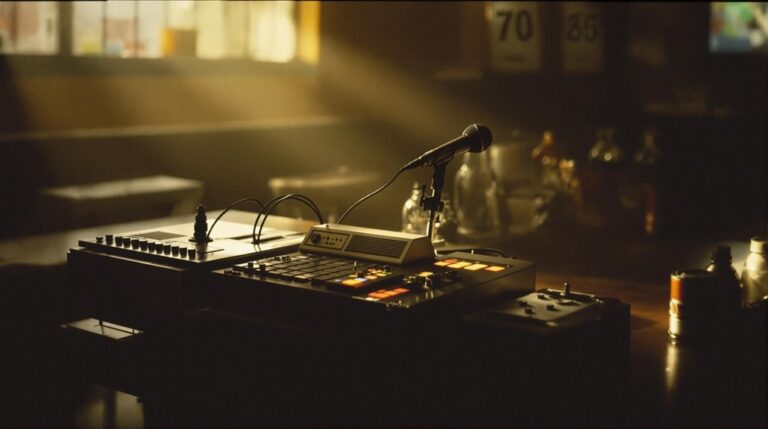Chuck Yeager’S Terrifying Spin From the Edge of Space
You've probably heard about Chuck Yeager breaking the sound barrier, but his brush with death in the NF-104A Starfighter tells an even more gripping tale. On a cold December morning in 1963, Yeager pushed this experimental aircraft to the edge of space, aiming to set another record. At 108,000 feet, where the air is too thin to breathe and the sky turns black, everything went catastrophically wrong. What happened next would test even this legendary pilot's limits.
The Ambitious Plan for a Record-Breaking Flight
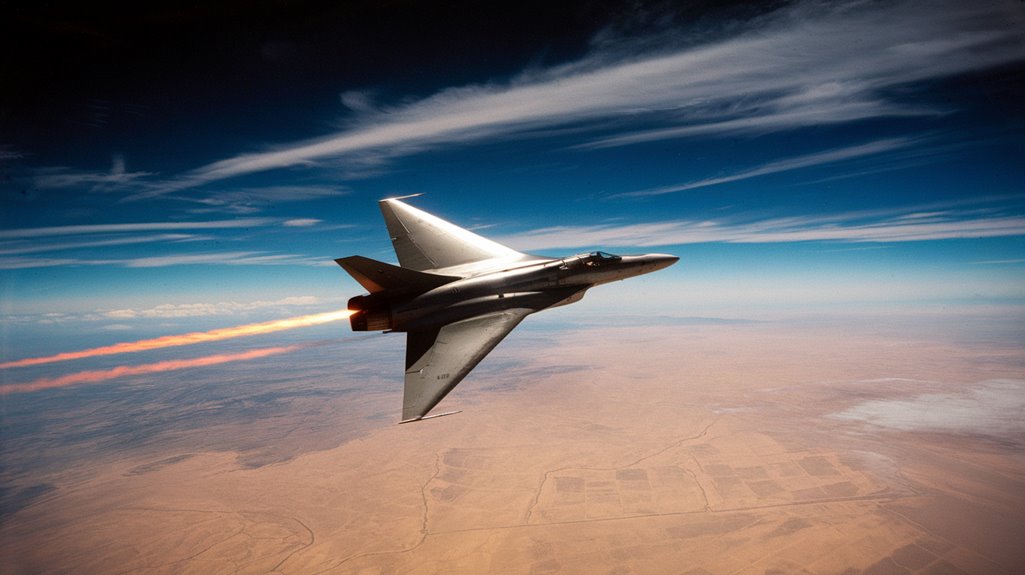
Three critical phases defined the ambitious plan to set a world altitude record with the Lockheed NF-104A Starfighter.
The first phase required accelerating at 35,000 feet until reaching Mach 2.2, pushing the aircraft's flight dynamics to their limits. You'd then witness the Rocketdyne AR2-3 engine roar to life, adding 6,600 pounds of thrust to power the next phase. Nicknamed the missile with man, the sleek aircraft was perfectly designed for this high-speed ascent.
In the second phase, you'd experience a precise 3.5G pull-up maneuver, directing the aircraft into a steep 70-degree climb.
The final phase would take you beyond conventional flight as the jet engine gradually powered down by 85,000 feet. At this altitude, you'd rely solely on the rocket engine and reaction jets in the nose and wing tips for control, aiming to break through the 100,000-foot barrier. The aircraft achieved peak altitude 108,000 feet during this record attempt, though it fell short of the previous record.
A Modified Fighter Jet Built for Space
Engineering brilliance transformed the F-104 Starfighter into a groundbreaking aerospace trainer known as the NF-104A.
You'll find this remarkable aircraft stripped of non-essential military equipment and fitted with specialized modifications for high altitude performance. The most notable addition was a Rocketdyne AR23 rocket engine, delivering 6,000 pounds of thrust for 100 seconds. This extreme altitude experience would later prove valuable for modern missions like Polaris Dawn, which will reach an unprecedented 870 miles high. The mission will require extensive fighter jet training to prepare the crew for the challenges ahead.
To reach near-space conditions, you'd pilot the NF-104A to 35,000 feet, accelerate to Mach 1.9, then ignite the rocket engine.
At Mach 2.1, you'd execute a steep zoom climb between 50 to 70 degrees, soaring to 85,000 feet.
At this extreme altitude, you'd rely on hydrogen peroxide thrusters for control in the thin air, experiencing several minutes of weightlessness during the parabolic arc.
The Moment Everything Went Wrong
On December 10, 1963, Chuck Yeager's routine test flight in the NF-104A turned catastrophic.
As he pushed the aircraft to 108,000 feet, control issues emerged when he pulled up too sharply at the climb's peak. The aircraft suddenly stalled, wobbling violently before plunging into an unrecoverable flat spin.
With the engine dead and the aircraft plummeting earthward, Yeager knew he'd only one option: eject.
But the ejection brought its own complications. The seat smashed into his helmet, cracking the faceplate and allowing rocket flames to ignite the rubber lining inside.
You'd think that'd be bad enough, but as Yeager fell with the seat, he'd to remove his gloves and smother the flames with his bare hands, resulting in severe third-degree burns to his face and hands. After landing, the legendary pilot insisted on retrieving his kneeboard from the wreckage despite his charred condition.
Racing Against Death in a Flat Spin
Plunging earthward at a sickening rate, Yeager's NF-104 entered what pilots fear most – a flat spin.
Unlike a normal spin where you'd have some control, flat spin dynamics turned his aircraft into a deadly frisbee, rotating horizontally as it descended. With his engine already burned out during the climb, he couldn't power his way to safety.
You're fighting time and physics in a flat spin. Every attempt Yeager made to regain control proved futile as the aircraft continued its relentless spiral. Bud Anderson tracked his descent, keeping vital visual contact with the troubled aircraft.
At one mile above ground, he knew ejection safety was his only option. It was a decision that would save his life but leave him with severe facial burns and a damaged eye. After recovering from this incident, Yeager went on to fly numerous missions, including breaking the sound barrier again in an F-15 over Mojave.
The incident marked the end of his record-breaking attempts but not his flying career.
Surviving a Fiery Ejection at 108,000 Feet
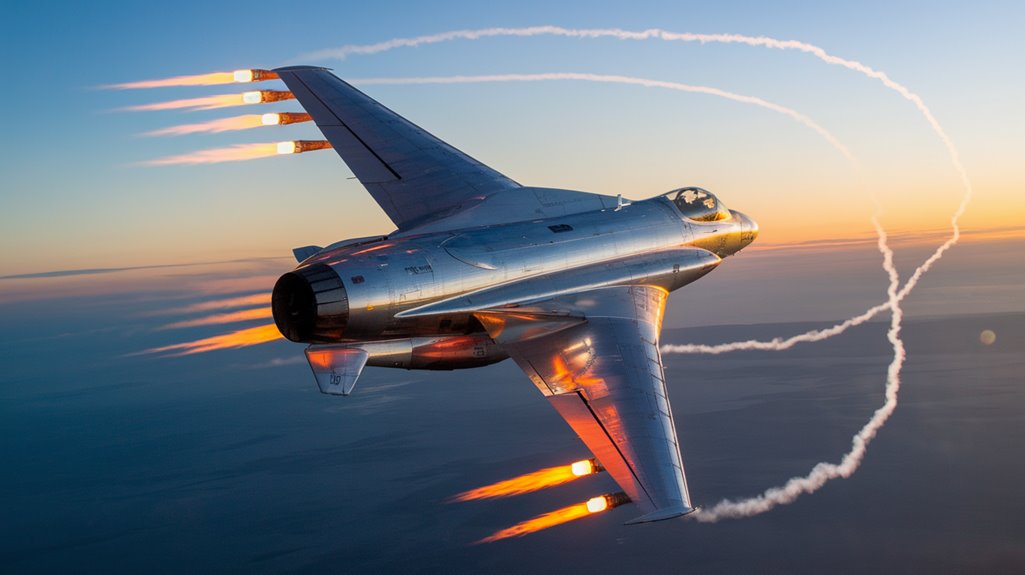
While most pilots never face ejection above 50,000 feet, Chuck Yeager's harrowing escape from his NF-104A would test the limits of survival at twice that altitude.
The ejection dynamics proved catastrophic as he fought to escape his aircraft's flat spin at 104,000 feet. His full-pressure suit, never before tested in such conditions, couldn't protect him from what came next. After completing thirteen full revolutions, Yeager made the critical decision to eject at 7,000 feet.
You'd think the parachute deployment would spell relief, but Yeager's ordeal was far from over.
The ejection seat became entangled in his chute lines, and its rocket's residual flames scorched his face severely. In a life-saving decision that pilot training hadn't covered, he pushed up his melting visor to cut off the oxygen supply, preventing the flames from consuming him.
Despite hitting the ground hard, he survived to wave at the passing chase plane.
Lessons Written in the Desert Sand
The catastrophic NF-104A incident proved that even legendary test pilots like Chuck Yeager couldn't rely solely on stick-and-rudder instincts at the edge of space.
You'll find the stark lesson etched in the wreckage: spaceflight demands more than natural flying ability.
The crash transformed aerospace education forever. NASA quickly realized that future astronauts needed extensive technical training and engineering knowledge to handle the unique challenges of near-space flight. Despite his exceptional flying skills, Yeager's lack of a college degree kept him from joining the astronaut corps. After retiring in 1975, he became a consulting test pilot to share his expertise.
You can't navigate the void between Earth and space with traditional piloting skills alone – the physics are completely different.

